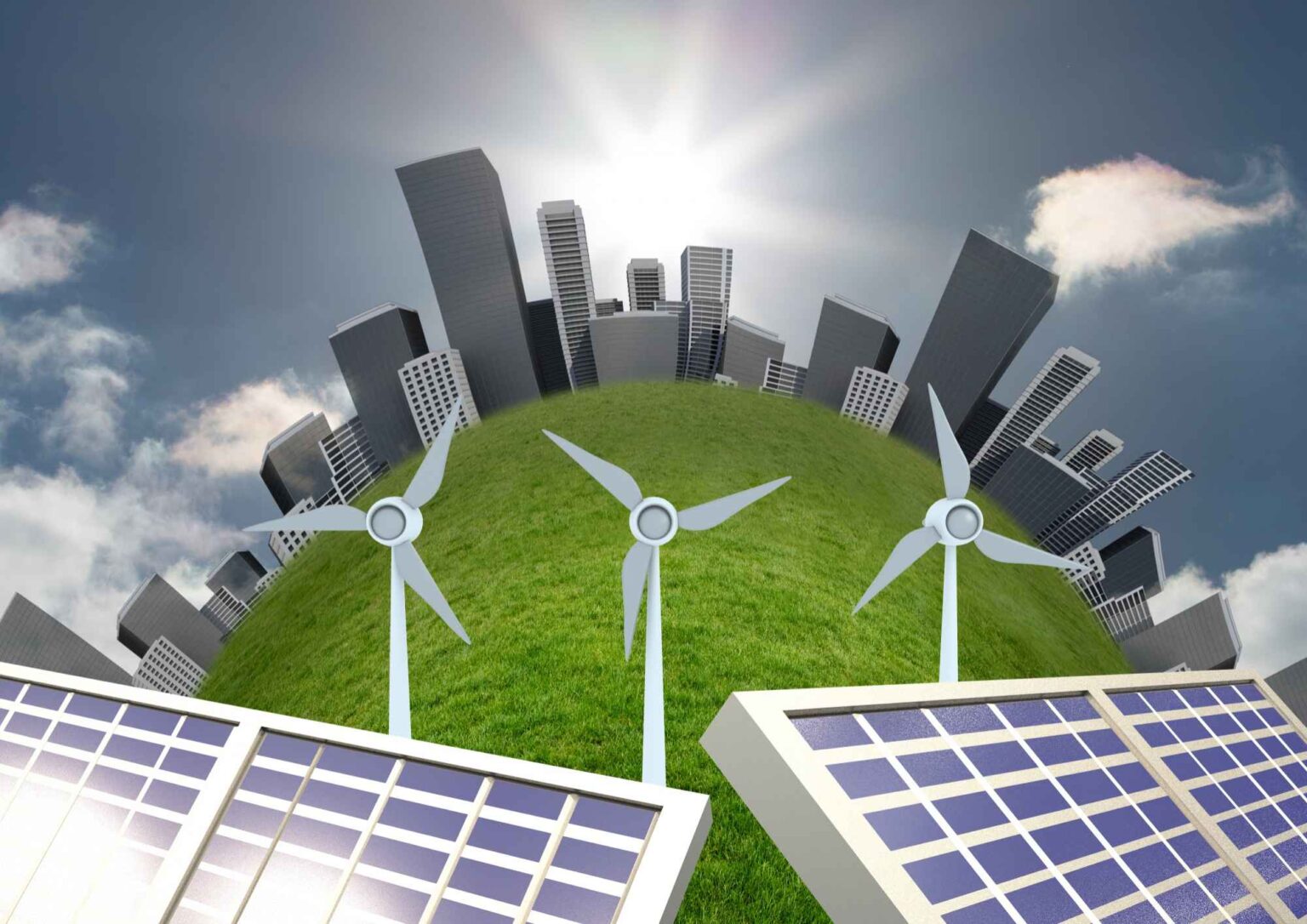Image Credit: ecolife.zone
In the context of smart cities, sustainable energy solutions play a crucial role in reducing carbon emissions, promoting environmental sustainability, and ensuring a reliable energy supply. Here are some key aspects of harnessing renewable resources for sustainable energy in smart cities:
Renewable Energy Generation: Smart cities leverage renewable energy sources such as solar, wind, hydro, and geothermal to generate clean electricity. Installing solar panels on rooftops, wind turbines in suitable areas, and utilizing hydroelectric or geothermal power plants contribute to a sustainable and decentralized energy generation infrastructure. Smart grids enable the efficient integration of renewable energy sources into the existing power grid.
Energy Storage and Management: To ensure a reliable and consistent energy supply, smart cities employ advanced energy storage technologies. Batteries, pumped hydro storage, or thermal storage systems store excess energy generated during periods of high production and release it during peak demand. Intelligent energy management systems optimize the storage, distribution, and consumption of energy based on demand patterns and real-time data, reducing waste and enhancing efficiency.
Demand Response and Load Management: Smart cities implement demand response programs and load management strategies to balance energy supply and demand. By leveraging IoT devices and real-time energy consumption data, cities can incentivize consumers to adjust their energy usage during peak periods or in response to grid conditions. This helps to avoid energy shortages, reduce strain on the grid, and optimize energy consumption.
Energy Efficiency and Conservation: Smart cities prioritize energy efficiency and conservation measures in buildings, transportation, and infrastructure. This includes implementing energy-efficient technologies, such as LED lighting, smart thermostats, and energy-efficient appliances. Additionally, smart sensors and monitoring systems enable real-time energy usage data collection, analysis, and optimization, leading to energy savings and reduced carbon footprint.
Electric Mobility and Vehicle-to-Grid (V2G): Smart cities promote electric mobility as a sustainable transportation solution. Electric vehicles (EVs) can be charged using renewable energy sources and integrated into the energy grid through vehicle-to-grid (V2G) technology. V2G allows EVs to supply electricity back to the grid during peak demand or support the grid during power outages, acting as mobile energy storage units and contributing to grid stability.
Integrated Energy Systems: In smart cities, integrated energy systems optimize the use of multiple energy sources and infrastructure. This includes combining renewable energy generation, energy storage, and energy management across various sectors such as buildings, transportation, and industry. By integrating different energy systems and enabling data exchange between them, cities can maximize energy efficiency, reduce costs, and minimize environmental impact.
Citizen Engagement and Education: Smart cities engage citizens in sustainable energy initiatives through awareness campaigns, education programs, and citizen participation platforms. Promoting energy-saving behaviors, encouraging renewable energy adoption, and fostering a culture of sustainability empower citizens to contribute actively to the transition towards clean and renewable energy sources.
Sustainable energy solutions in smart cities go beyond simply reducing carbon emissions. They foster energy independence, improve air quality, enhance resilience against power outages, and drive economic growth through job creation in the renewable energy sector. By harnessing renewable resources and integrating them into smart city infrastructure and planning, cities can create a sustainable and livable environment for current and future generations.



